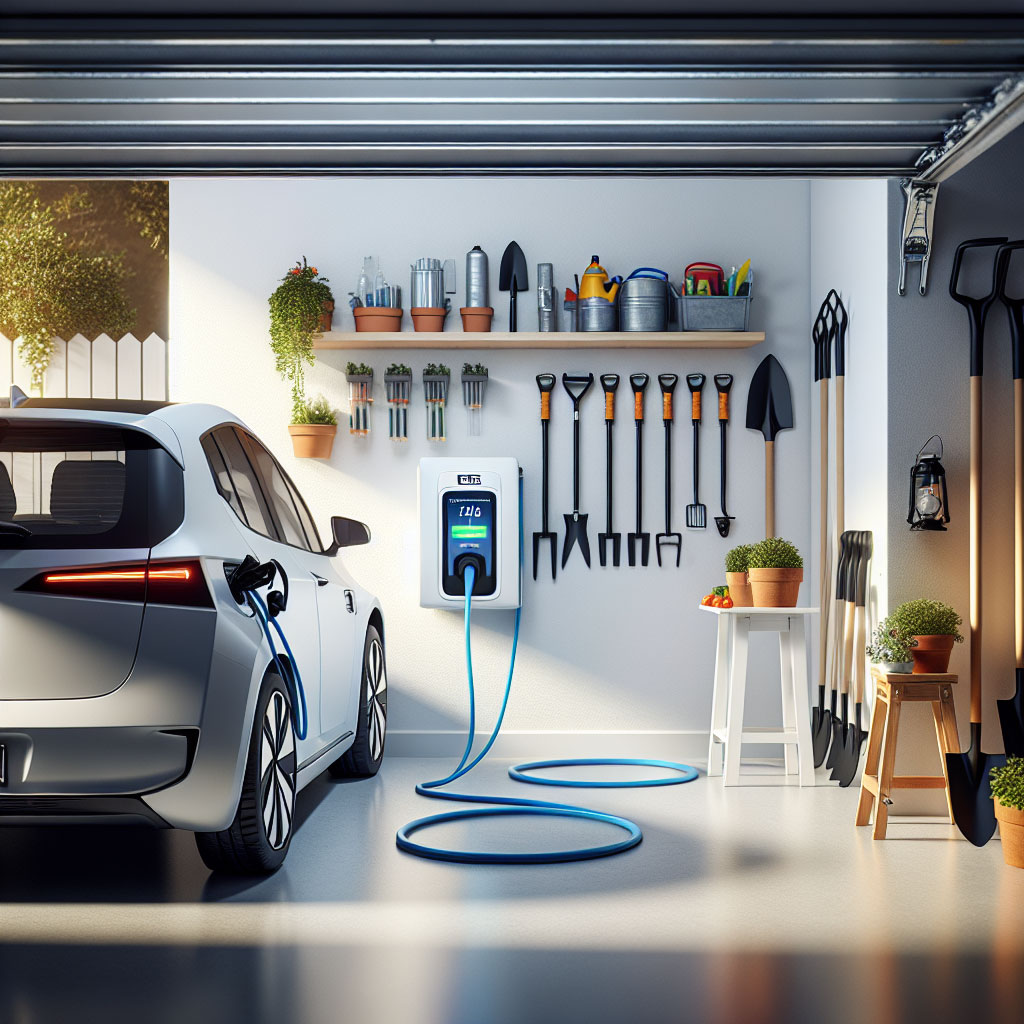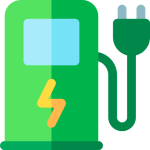
For new and prospective EV owners in Australia, the first charging option they encounter is the simplest: plugging into a standard household power point. This is known as Level 1 or “trickle” charging. While convenient in a pinch, it quickly raises a critical question: Is a dedicated Level 2 EV charger Australia wall box truly worth the higher upfront investment?
At EV Evolution, we believe the answer is a resounding yes. A wall box transforms the EV ownership experience from an exercise in battery management to a seamless, set-and-forget routine. This guide explains why the speed, convenience, and safety of a dedicated Level 2 system far outweigh the basic functionality of a standard power point.
The Core Comparison: Power Point vs. Wall Box
The key difference between Level 1 (Power Point) and Level 2 (Wall Box) charging is the power delivery.4 This is measured in kilowatts (kW) and dictates your charging speed.5
| Feature | Level 1 (Standard 10A Power Point) | Level 2 (Dedicated Wall Box) |
| Power Output | Approx 2.4 kW | 7 kW (Single-Phase) to $22 kW (Three-Phase) |
| Range Added per Hour | 10 km to 15 km | 35 km to 120 km |
| Full Charge Time | 24 hours for a typical 60kWh battery | 4 to 8 hours (easily charged overnight) |
| Wiring | Shared household circuit | Dedicated, professionally installed circuit |
| Cost to Install | Minimal (plug-and-play) | $1,500 to $3,500 (Unit + Installation) |
1. Speed: The Ultimate Convenience Factor
The single most compelling reason to install a Level 2 EV charger Australia wall box is speed.
The average Australian drives around 37 km per day. A Level 1 trickle charger takes nearly three hours to replace that range. If you miss a night of charging, or if your battery is significantly depleted (say, after a weekend trip), recovering the charge can take days.
In contrast:
- 7kW Single-Phase Wall Box: Easily adds 35 to 45 km of range per hour.
- This means you replace the average daily drive in less than one hour.
- You can charge a depleted battery to 80% in a comfortable overnight window 4 to 8 hours, ensuring you always wake up with a “full tank.”
The Investment Value: This convenience eliminates range anxiety completely. Your EV charging routine shifts from an active worry to a passive, automatic process that occurs while you sleep.
2. Safety and Electrical Integrity: Dedicated Power
A standard 10-amp power point is designed for appliances that draw power intermittently—a vacuum cleaner, a toaster, a phone charger. It is not designed to handle a continuous, high-current load for 10 to 24 hours straight, which is what your EV demands.
The Risks of Long-Term Level 1 Charging:
- Circuit Overload: Prolonged use can stress the wiring and circuit breakers, potentially leading to tripped circuits or, in rare cases, fire hazards, especially in older homes.
- Plug & Socket Wear: The frequent heat generated by continuous high-current flow causes accelerated wear and tear on the plug and the socket itself.
The Safety of a Level 2 Installation:
When you opt for home EV charger installation, a licensed electrician runs a dedicated, heavy-duty circuit straight from your main switchboard to the charger location. This installation includes:
- Dedicated Circuit Breakers: To protect the entire line.
- Appropriately Sized Cables: Rated to handle the sustained current (e.g. 32 A for a 7 kW charger).
- RCD Protection: Ensuring maximum safety against electrical faults.
A wall box is purpose-built for the high, sustained loads of EV charging, providing unparalleled safety and peace of mind.
3. Smart Features and Cost Savings
Beyond raw speed, modern Level 2 wall boxes come equipped with “smart” features that unlock significant long-term financial benefits—features entirely absent from a basic trickle cable.
- Solar Integration: If you have rooftop solar panels, a smart wall box (like a Zappi or Wallbox unit) can be configured to only charge your EV using surplus solar power. This means you charge your car for free, dramatically reducing your running costs. This feature alone can justify the upfront installation cost over a few years.
- Off-Peak Scheduling: Smart chargers connect to your home Wi-Fi, allowing you to schedule charging hours via a phone app. You can program your car to only draw power during the cheapest off-peak electricity tariffs (often overnight), resulting in huge savings compared to charging at peak times.
- Load Management: For homes with multiple heavy loads (like pool pumps, air conditioning, and a second EV), advanced wall boxes can dynamically manage the power drawn by the EV. This prevents you from overloading your home’s main fuse, avoiding the need for expensive switchboard upgrades.
Weighing the Investment: Installation Costs in Australia
While the benefits are clear, the upfront cost of home EV charger installation is the main barrier.
The total cost generally ranges from $1,500 to } $3,500, which includes:
- Hardware: The Level 2 wall charger unit (approx $700 to $2,000).
- Installation: Labour, cabling, and necessary protection (approx $700 to $1,500 for a standard install).
Factors that increase the cost
- Distance: The further the charger is from your main switchboard, the higher the cabling cost
- Switchboard Upgrade: Older Australian homes may require a switchboard upgrade to handle the extra load (approx $500 to $2,000 extra).
- Three-Phase Power: Opting for a 22 kW charger requires three-phase power, which is faster but more expensive to install if your home doesn’t have it already.
The Financial Payback: When you consider the cost savings achieved through solar integration and off-peak charging, the wall box is not just an expense—it is a long-term asset that maximises the cost-effectiveness of your EV.
🔑 Conclusion: The Value of Peace of Mind
Level 1 charging is acceptable as an emergency backup. However, it is an impractical, slow, and potentially risky long-term solution for daily use.
A dedicated Level 2 wall box is an essential investment that delivers:
- Unmatched Speed: Always ensuring a full battery overnight.
- Superior Safety: A dedicated circuit built for the task.
- Financial Control: Smart features that minimise electricity bills, especially with solar power.
If you are serious about embracing the electric lifestyle and want your EV ownership to be as effortless as your petrol station visits used to be, the upgrade to a Level 2 charger is indispensable.
Ready to start charging smarter, not slower? Explore EV evolution’s premium range of certified Level 2 Wall Chargers and download our comprehensive Installation Guide to prepare your home.
Frequently asked questions (FAQs)
Do I legally need a dedicated charger or can I keep using my power point?
You are not legally required to install a dedicated charger, but using a standard power point for daily EV charging is not recommended. Long-term use can overstress sockets and wiring. A dedicated charger installed by a licensed electrician ensures compliance with wiring rules and minimises safety risks.
How much does a typical Level 2 home charger installation cost in Australia?
A straightforward installation including a mid-range charger usually lands between AUD 1,500 and AUD 4,000. The price depends on the charger model, distance from the switchboard, and whether you need a switchboard upgrade or trenching. Complex installs can exceed this range.
Is a 7 kW charger enough for my needs?
For most Australians, yes. A 7 kW single‑phase charger is fast enough to restore daily driving needs within an hour and will charge most EVs to 80% overnight. Higher capacity chargers are available but are often unnecessary unless you have very high daily mileage or three‑phase supply.
Can I use a wall box with rooftop solar?
Yes. Many smart chargers can be configured to prioritise surplus solar generation. When paired correctly with your inverter and managed charging settings, you can significantly reduce the cost of charging, especially in daylight hours when surplus solar is available.
What about V2G – should I buy a charger now to use it later?
V2G is promising but still in early stages of commercial rollout in Australia. If you expect to participate in V2G services in the near future, consider chargers and vehicles that advertise bidirectional capability and OCPP support. Otherwise, a standard smart Level 2 charger remains a solid choice today.
About EV Evolution
EV Evolution is the leading online platform dedicated to Australian electric vehicle owners and enthusiasts. We foster a vibrant community, delivering essential EV news and insights, and enhancing user engagement through our innovative, AI-powered chatbot for dynamic discussions. Our mission is to empower Australian electric vehicle owners and enthusiasts by fostering a vibrant, AI-driven online community that connects, informs, and advances the nation’s electric vehicle landscape.




